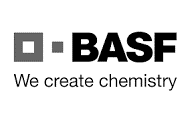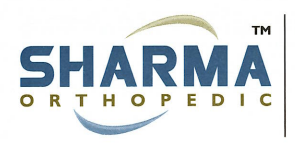- HS Classification Opinions
- 227 Views
Thus, the ENs to heading 2009, HTSUS, specifically provide that sugar is allowed in fruit juice so long as the fruit juice retains its original character as a fruit juice. While the ENs do not specify an amount of sugar necessary to alter the character of a fruit juice, it is evident that the 21.5% sugar that is contained in the Lemonade Base changes the original character of the lemon juice.
OT:RR:CTF:FTM H325781 MJD
Mr. Russell Semmel
Bryan Cave Leighton Paisner LLP
1290 Avenue of the Americas
New York, NY 10104
Re: Affirmation of NY N325564; Tariff Classification of Lemonade Base from France
Dear Mr. Semmel:
This is in response to your request, dated June 3, 2022, for reconsideration of New York Ruling Letter (“NY”) N325564, issued to you on May 16, 2022, on behalf of your client, Sun Orchard LLC (hereinafter referred to as “Sun Orchard”) regarding the tariff classification of the Efficient Lemonade Base (“Lemonade Base”) under the Harmonized Tariff Schedule of the United States (“HTSUS”).
Specifically, U.S. Customs and Border Protection (“CBP”) classified the Lemonade Base under subheading 2106.90.9500, HTSUS Annotated (“HTSUSA”), which provides for “[f]ood preparations not elsewhere specified or included: Other: Other: Other: Other: Other: Articles containing over 10 percent by dry weight of sugar described in additional U.S. note 3 to chapter 17: Described in additional U.S. note 8 to chapter 17 and entered pursuant to its provisions.” We have reviewed NY N325564 and determined it to be correct for the reasons set forth below.
NY N325564, described the Efficient Lemonade Base and how it will be imported and sold as follows:
The subject merchandise is described as a Lemonade Base in liquid form. It is said to contain approximately 40 percent water, 39 percent not-from-concentrate (NFC) lemon juice, and 22 percent granulated beet sugar with trace amounts of lemon oil. The product is said to be prepared by combining the water, NFC lemon juice, sugar and lemon oil in a food-grade stainless steel tank, pasteurizing said ingredients, aseptically filling and closing into multi-laminate paperboard cartons.
The Lemonade Base will be imported into the United States at an ambient temperature and will be sold to certain domestic restaurant operators as an ingredient for the manufacture of lemonade by dilution. The product will not be sold directly to consumers or for retail household use, instead, the operator will distribute the product to individual restaurants, as end-users, that then use the product to prepare and sell lemonade and lemonade-containing drinks to consumers. Preparation instructions on the product packaging will direct the operator to pour the Lemonade Base into a 2 liter pitcher to the 0.75 liter line, add cold water to the 2 liter line, subsequent to mixing with a whisk.
In your request for reconsideration, you provide that the NFC lemon juice used to make the Lemonade Base has an average brix value in a naturally occurring range between 5.0 and 10.0 and is extracted by a mechanical process from mature lemons with no added sweeteners, acidulants, or preservatives. The Lemonade Base as a final product is high acid with 2.7 pH average and has an average brix value of 25.05 and titratable acidity of 1.73 percent. You assert that the Lemonade Base should be classified in subheading 2009.39.6040, HTSUSA, which provides for “[f]ruit or nut juices (including grape must and coconut water) and vegetable juices, unfermented and not containing added spirit, whether or not containing added sugar or other sweetening matter: Juice of any other single citrus fruit: Other: Other: Lemon juice: Other.” In NY N325564, CBP stated that the Lemonade Base was not classified in subheading 2009.39.6040, HTSUSA, because “[t]he product does not have the essential character of a juice product as it contains 25 percent of sugar added.” You argue specifically that “CBP has not determined to what extent the sugar must be present to alter the character of the juice,” and that heading 2009, HTSUS, specifically provides for juices “whether or not containing added sugar.” Additionally, you provide that because the Lemonade Base will be further manufactured after importation, its use does not preclude it from classification in heading 2009, HTSUS. You cite to Headquarters Ruling Letter (“HQ”) 088756, dated April 8, 1991, where CBP classified a frozen concentrated orange juice in heading 2009, HTSUS, that would be mixed with orange oil, orange essence, pulp, and water after importation to make orange juice for retail sale.
Upon further review, we find that the Lemonade Base at issue is not classified in subheading 2009.39.6040, HTSUSA, as a fruit juice. The ENs to heading 2009, HTSUS, are instructive, and state, in pertinent part, the following:
Provided they retain their original character, the fruit, nut or vegetable juices of this heading may contain substances of the kinds listed below, whether these result from the manufacturing process or have been added separately:
(1) Sugar.
…
Thus, the ENs to heading 2009, HTSUS, specifically provide that sugar is allowed in fruit juice so long as the fruit juice retains its original character as a fruit juice. While the ENs do not specify an amount of sugar necessary to alter the character of a fruit juice, it is evident that the 21.5% sugar that is contained in the Lemonade Base changes the original character of the lemon juice. You provided that the brix value of the NFC lemon juice used to make the Lemonade Base is between 5.0 and 10.0, and that the brix value of the Lemonade Base when finalized is 25.05, which is higher than the brix value of the NFC lemon juice. Therefore, the sugar added to the NFC lemon juice clearly alters its characteristics. Essentially, the amount of sugar added to the lemon juice to make the Lemonade Base changes the product from what was considered lemon juice, a fruit juice properly classified in heading 2009, HTSUS, to a lemonade beverage, a distinct product from lemon juice classified elsewhere in the HTSUS. This is also supported by the fact that the Lemonade Base is called lemonade and marketed and advertised as such. Therefore, the Lemonade Base at issue is precluded from classification in heading 2009, HTSUS, because the amount of sugar in the product alters the original character of the lemon juice.
In the alternative, you argue that the product should be classified in subheading 2106.90.9972, HTSUSA[1], which provides for “[f]ood preparations not elsewhere specified or included: Other: Other: Other: Other: Other: Other: Preparations for the manufacture of beverages: Containing sugar derived from sugar cane and/or sugar beets.” In NY N325564, CBP stated that the product was not classified in subheading 2106.90.9872, HTSUSA (the prior version of subheading 2106.90.9972, HTSUSA), due to the “composition of the ingredients and use” of the Lemonade Base. Upon review, we concur with NY N325564 that the Lemonade Base is not classified in subheading 2106.90.9872, HTSUSA, and instead is properly classified in subheading 2106.90.9500, HTSUSA. First, the Lemonade Base is specifically described for in the ENs to subheading 2106.90, HTSUS. The ENs to subheading 2106.90(12) provide for “[p]reparations for the manufacture of lemonades or other beverages… preparations [that]are intended to be consumed as beverages after simple dilution with water or after further treatment.” The Lemonade Base at issue is a preparation for the manufacture of lemonade and after importation only requires to be diluted with water and stirred for use, thus, meeting the description for a food preparation of heading 2106, HTSUS. Also, you specifically state that “[o]n its very face, the Efficient Lemonade Base matches up to Note 21.06(12) perfectly.” Therefore, the analysis turns to the 8-digit level and determining whether the Lemonade Base is classified as “articles containing over 10 percent by dry weight of sugar described in additional U.S. note 3 to chapter 17” or “other” products.
As mentioned above, subheading 2106.90.9500, HTSUSA, provides for “[f]ood preparations not elsewhere specified or included…Articles containing over 10 percent by dry weight of sugar described in additional U.S. note 3 to chapter 17 …”. Note 3 to Chapter 17, HTSUS, provides in pertinent part, the following:
For the purposes of this schedule, the term “articles containing over 10 percent by dry weight of sugar described in additional U.S. note 3 to chapter 17” means articles containing over 10 percent by dry weight of sugars derived from sugar cane or sugar beets, whether or not mixed with other ingredients, except (a) articles not principally of crystalline structure or not in dry amorphous form, the foregoing that are prepared for marketing to the ultimate consumer in the identical form and package in which imported…
As the Lemonade Base at issue contains over 10 percent of dry weight of sugar, specifically 21.5% of granulated beet sugar, and is imported in liquid form and in bulk for certain domestic restaurant operators, and not for retail sale to consumers or for retail household use, the Lemonade Base meets the requirements of Note 3 to Chapter 17, HTSUS, and is thus classified in subheading 2106.90.95, HTSUS. Accordingly, resorting to subheading 2106.90.9972, HTSUSA, a basket provision, is unnecessary when subheading 2106.90.95, HTSUS, covers the product more specifically. See Apex Universal v. United States, 22 C.I.T. 465 (1998).
However, in support of your argument for the classification of the Lemonade Base in subheading 2106.90.9972, HTSUSA, you cite to several CBP rulings that classified what you argue are products that have a similar composition or use as the Lemonade Base. Specifically, you cite to NY N314572, dated October 13, 2020, which classified drink mixes in subheading 2106.90.9872, HTSUSA, that contained “90 percent sugar, 5 percent citric acid, 1 percent lemonade flavoring, 1 percent trisodium citrate” and trace amounts of other ingredients. The drink mixes were packaged for retail sale. You also cite to NY N306871, dated November 8, 2019, which classified among other drink mixes, a sweet and sour drink mix in subheading 2106.90.9872, HTSUSA, which consisted of “approximately 67 water, 28 percent sugar, 2 percent lemon juice concentrate, 2 percent lime juice concentrate” and trace amounts of other ingredients.
Likewise, you cite to NY R03573, dated May 1, 2006, which was modified by NY M82318, dated May 10, 2006, classifying a frozen limeade concentrate in subheading 2106.90.9972, HTSUSA. The frozen limeade consisted of “28.21 percent water, 20.5 percent liquid invert sugar (brix 77.5), 40.89 percent high fructose corn syrup (brix 77), 7.68 percent lime juice concentrate (brix 55), 2.68 percent lime pulp, and 0.036 percent lime oil.” The product was packaged for retail sale in 12-oz cans. Lastly, you cite to NY N311329, dated May 18, 2020, where CBP classified three concentrated beverage bases, Formula J made with high fructose corn syrup and cane sugar in subheading 2106.90.9872, HTSUSA, Formula CF-3468 made of lemon/lime flavoring and high fructose corn syrup, and Formula N made with only high fructose corn syrup in subheading 2106.90.9873, HTSUSA, which provides for “[f]ood preparations not elsewhere specified or included: Other: Other: Other: Other: Other: Other: Preparations for the manufacture of beverages: Other.” In NY N311329, the products were imported in bulk, and after importation were diluted and retail packaged for human consumption.
Please note that unlike the Lemonade Base at issue which met the requirements of Note 3 to Chapter 17, HTSUS, in subheading 2106.90.95, HTSUS, the products in the rulings cited above did not. Specifically, the rulings met the exception outlined in Note 3 to Chapter 17, HTSUS, which provides that products containing over 10 percent of dry weight of sugar are classified in subheading 2106.90.9500, HTSUSA, so long as they are “not principally of crystalline structure or not in dry amorphous form, the foregoing that are prepared for marketing to the ultimate consumer in the identical form and package in which imported.” Since these products met this exception, they did not meet the requirements of Note 3 to Chapter 17, HTSUS, making them classifiable in subheading 2106.90.98, HTSUS (or subheading 2106.90.9972, HTSUSA, in the case of the products in NY M82318). Specifically, in NY N314572, the products were in powder form and packaged for retail sale thus meeting the exception to Note 3 to Chapter 17, HTSUS, which is why they were classified in subheading 2106.90.9872, HTSUSA.[2] Likewise in NY N306871, the sweet and sour drink mix was in liquid form and packaged for retail sale thus meeting the exception to Note 3 to Chapter 17, HTSUS, which is why it was classified in subheading 2106.90.9872, HTSUSA.[3]
In NY M82318, we would first like to note that high fructose corn syrup, which was an ingredient in the frozen limeade concentrate, is not considered sugar for purposes of Note 3 to Chapter 17, HTSUS. Only sugar derived from sugar cane or sugar beets is considered sugar for purposes of Note 3 to Chapter 17, HTSUS. Second, the product was frozen and packaged for retail sale, thus meeting the exception to Note 3 to Chapter 17, HTSUS, precluding this product from classification in subheading 2106.90.9500, HTSUSA, which is why the product was classifiable in subheading 2106.90.9972, HTSUSA. Lastly, in NY N311329, all three products contained high fructose corn syrup, which as mentioned above is not considered sugar for purposes of Note 3 to Chapter 17, HTSUS. The only concentrated beverage base that contained cane sugar, Formula J, did not meet the requisite amount of sugar specified in Note 3 to Chapter 17, HTSUS, and therefore the product did not meet the requirements for classification in subheading 2106.90.9500, HTSUSA.
For the above reasons, we affirm NY N325564, dated May 16, 2022, which correctly classified the Lemonade Base, if imported in quantities that fall within the limits described in additional U.S. note 8 to chapter 17 and entered pursuant to its provisions, in subheading 2106.90.9500, HTSUSA, which provides for “[f]ood preparations not elsewhere specified or included: other: other: other: other: other: Articles containing over 10 percent by dry weight of sugar described in additional U.S. note 3 to chapter 17: Described in additional U.S. note 8 to chapter 17 and entered pursuant to its provisions.” The 2022 column one, general rate of duty is 10% ad valorem.
If the quantitative limits of additional U.S. note 8 to chapter 17 have been reached, the Lemonade Base will be classified in subheading 2106.90.9700, HTSUSA, which provides for “[f]ood preparations not elsewhere specified or included: other: other: other: other: other: Articles containing over 10 percent by dry weight of sugar described in additional U.S. note 3 to chapter 17: Other.” The 2022 column one, general rate of duty is 28.8/kg + 8.5% ad valorem.
Sincerely,
Yuliya A. Gulis, Acting Director
Commercial and Trade Facilitation Division
———————–
[1] In your submission, you argue that in the alternative the Lemonade Base should be classified in subheading 2106.90.9872, HTSUSA, but the correct provision under the 4th revision of the HTSUS, dated April 8, 2022, is subheading 2106.90.9972, HTSUSA.
[2] An ingredients breakdown, a manufacturing flowchart, and photocopies of the product labels were provided for the products in NY N314572 that stated the products were in powder form and packaged for retail sale.
[3] An ingredients breakdown, a manufacturing flowchart, and a narrative description of the manufacturing process of the product in NY N306871 was provided that stated the product was in liquid form and packaged for retail sale.
———————————————————————————————————————–
Janron Consult, Tax Consultant Kenya, Customs Tax Consultant Kenya, Tax Advisory Kenya
Talk to Janron Consult for the following:
Ministry of Health Exemptions
Treasury Exemptions
Advance Ruling Application to KRA
Objection to KRA Rulings on Customs Value
Objections to KRA Rulings on HS Classification








